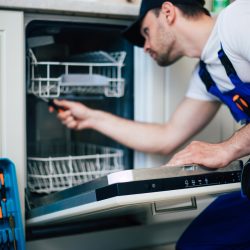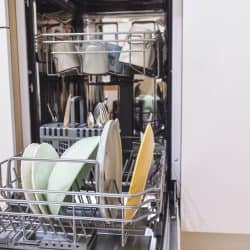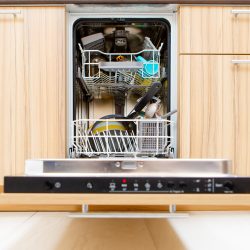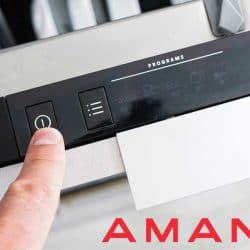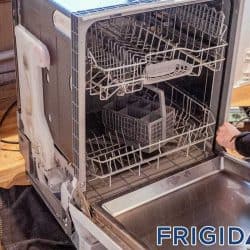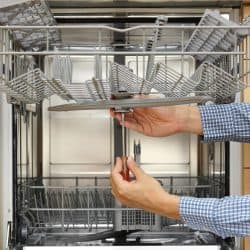The family has finished dining for the evening, and there is a pile of dishes in the sink. You load the dishwasher and press the start button, yet nothing happens! Sound familiar? Dishwashers are prone to malfunction just like any other household appliance--and yes, it can definitely be confusing. To help you troubleshoot the reasons why your dishwasher may start, we've done a bit of research on the topic. This post will discuss the best ways to troubleshoot your dishwasher and get it back up and running.
Here are a few components to check when your dishwasher doesn't start:
- Inspect the Power Plug
- Check the Door Latch
- Check the Start Switch
- Check the Control Panel
- Inspect the Electric Timer Control
- Inspect the Selector Switches
- Test the Thermal Fuse
- Check the Heater Element
- Test the Drive Motor
The steps that we've listed below maybe apply to a variety of dishwasher brands and models. However, it's best to refer to the owner's manual for your dishwasher for the most accurate troubleshooting tips. If you've misplaced it, you can typically find it online on the manufacturer's website or contact them directly for a copy. Continue reading to learn how more about the steps to take to figure out the dishwasher issue.
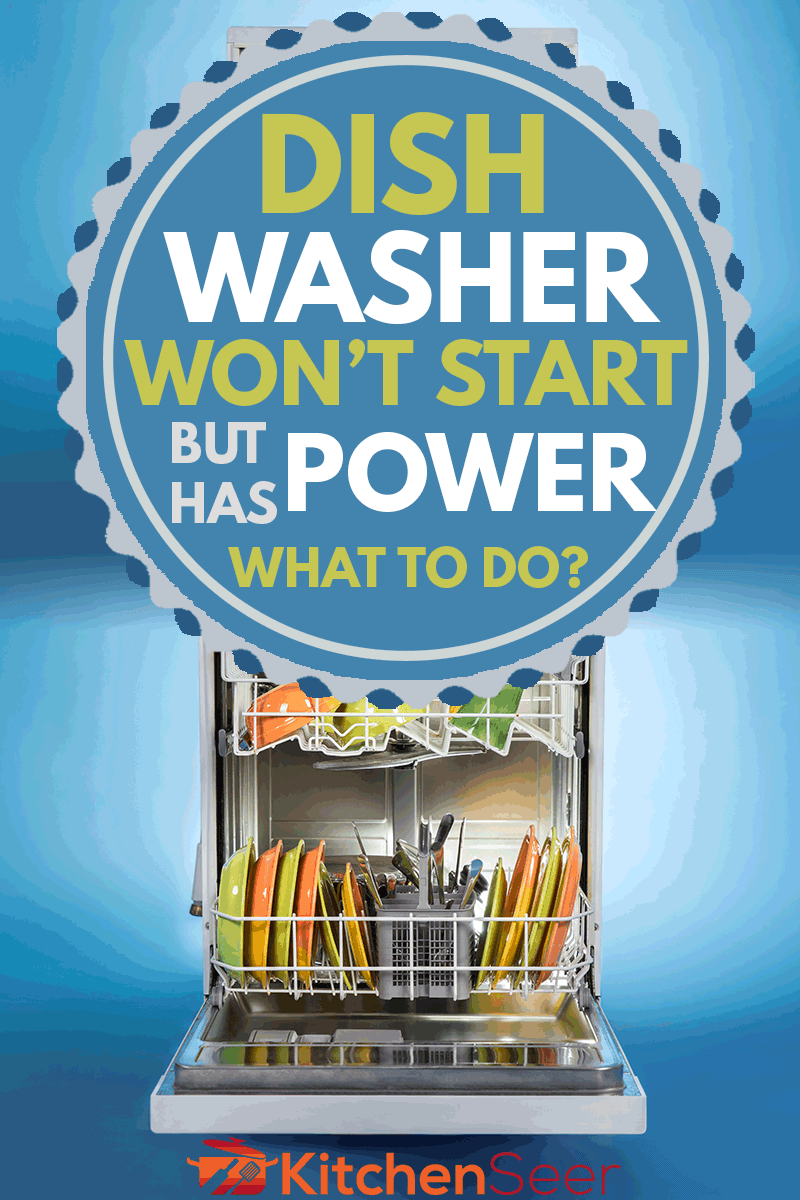
What To Check When Your Dishwasher Isn't Starting
Inspect The Power Plug
The first and most obvious thing to check should be the dishwasher's power supply. Is the dishwasher completely plugged in? Most of the time in the power supply for the dishwasher is located behind cabinets or beneath the sink--and maybe come I lose if items are placed in these areas.
Before performing any other check, it's best to double-check the power plug to ensure that it is completely secured inside the outlet. You may also want to check your electricity breaker box to ensure that the breaker that controls the dishwasher is functioning correctly (also check for frayed or damaged areas on the cord). To do this, you simply need to flip the breaker off and flip it back on--if the dishwasher powers back on, then this was your issue.
Check The Door Latch
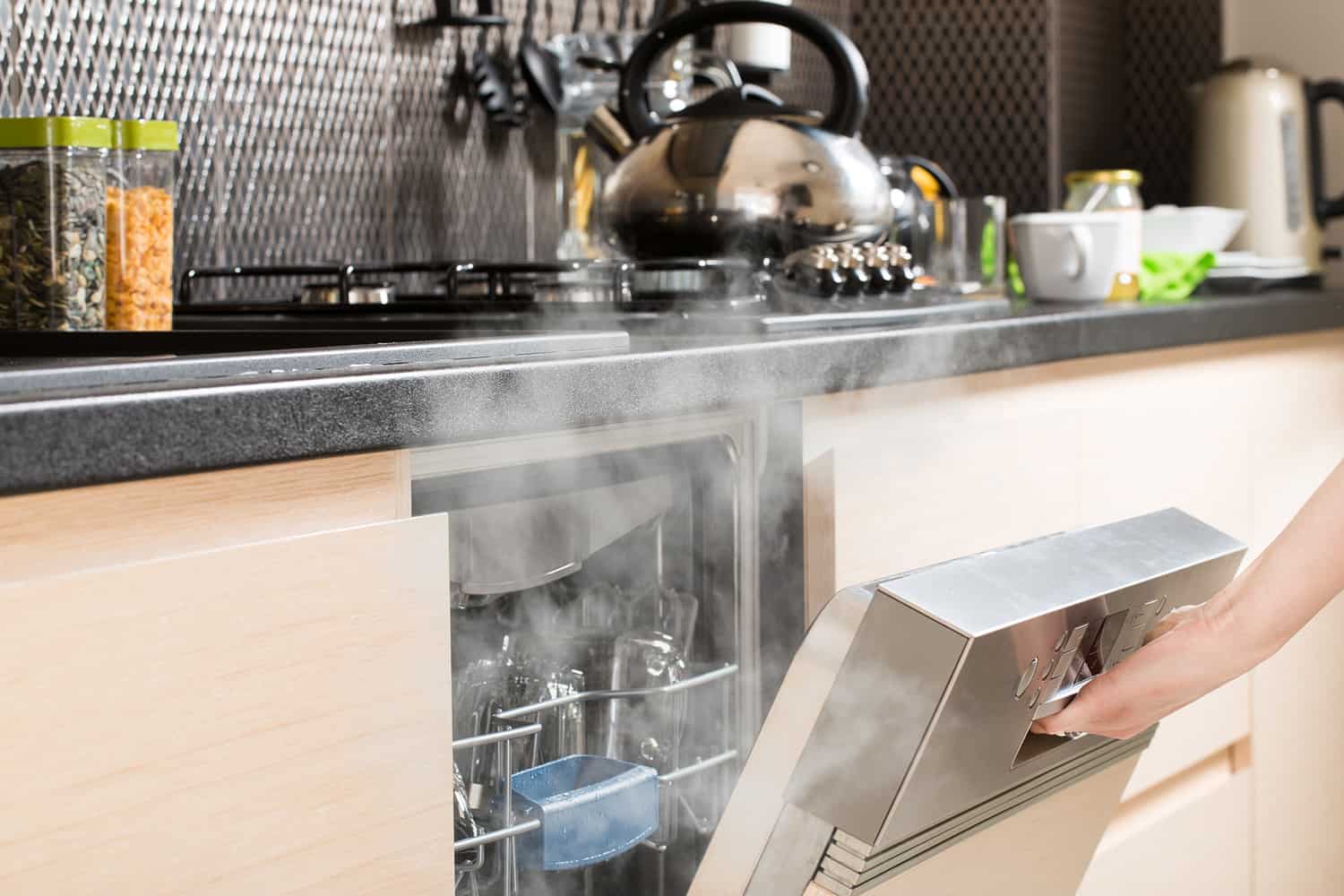
Another common reason that you're dishwasher may not turn on is because the door is not entirely shut. Sometimes the latch may malfunction and prevent the door from locking into place, keeping the dishwasher from starting. If this is the case, the latch will need to be replaced. You should be able to purchase a new door latch for around $30 to $40, depending on the dishwasher brand.
The latch could also have a broken seal, preventing it from closing correctly. The dishwasher will not operate, as it would not be able to run safely. If this is your issue, the seal would need to be replaced. The latch could also be jammed by caked-up debris or soap scum, in which case it will not click shut to start. You can use an all-purpose cleaner and a microfiber cloth to thoroughly clean the area around the latch if this is the issue.
Lastly, check to see if the child safety setting has accidentally been switched on--this will also prevent the dishwasher from starting.
Check The Start Switch
The start switch is the most commonly used button on any dishwasher. If you have checked your door latch and the power supply, the start switch itself could be the issue. You may be able to test the switch yourself using a multimeter, depending on the dishwasher brand and model. If not, you will need to have an appliance repair technician to perform a diagnostic test. If the switch is faulty, it will need to be replaced. Start switches can range anywhere from $25 to $70, depending on the dishwasher brand.
Check The Control Panel
Sometimes the computer control panels on dishwashers may malfunction due to everyday usage and old age. If you notice other issues with your dishwasher, such as it jumping from setting to setting on its own or lights randomly coming on, then it could be that the control panel needs to be replaced. It's best to have an appliance repair technician take a look at the dishwasher if you suspect that the control panel has become faulty.
Inspect The Electric Timer Control
The timer control of a dishwasher is responsible for regulating the amount of time the dishwasher spins and each phase of its cleaning cycle. When the switch malfunctions, the dishwasher will not start. This timer is also connected to the control panel, and if the connection is broken, it will need to be re-established. If the timer is faulty or the control becomes faulty, it will need to be replaced.
These timers are fairly expensive and typically run about $60 to $300 more. This being stated, you may want to get a few quotes for the timer control repair/replacement to determine if it's worth it or if it's better just to replace the entire dishwasher.
Inspect The Selector Switches
Selector switches allow the dishwasher to operate on various wash, rinse, and drying settings. Each setting has its own switch, and when the control panel malfunctions, these switches will not work properly. Also, if the switches have become damaged or somehow lose their connection to the panel, the dishwasher will not power on. If this is the case, the dishwasher will need to be disassembled to replace these switches. They can typically be purchased for around $30 or more.
Test The Thermal Fuse
The thermal fuse helps prevent overheating of the control board. If the thermal fuse blows, electricity will no longer reach the control board. The fuse works to prevent burnouts and fires if other components malfunction. If this fuse blows out, the dishwasher will not start-even if it has power.
Check the Heater Element
A faulty heater element can also prevent the dishwasher from starting. When the heater element of a dishwasher is faulty, the dishwasher will stay stuck in one stage continuously (whatever stage the dishwasher was in when the heating element malfunctioned). If this happens, the dishwasher will ultimately turn off and will not start again until the heater element has been replaced (faulty heating elements cannot be repaired).
You can test the continuity of the heating element by using a multimeter. The heating element can be accessed by removing the front panel of the dishwasher. Though its appearance will vary depending on your dishwasher brand and model, the heating element will usually be a long thin circle or horseshoe-shaped rod with metal pieces on both ends of it.
Test it by placing your multimeter's needle on the metal piece at the end of the heating element. If the heating element has no continuity, then this is your issue. A new dishwasher heating element will run about $20 to $65, depending on the brand.
Test The Drive Motor
The drive motor of your dishwasher is one of the most important elements and its operation, as it powers the spray arms of the dishwasher. When the drive motor malfunctions, not only will the water stop running the dishwasher, but the dishwasher may not start at all (depending on the brand). Also, if you have heard any strange noises coming from the dishwasher in the previous days or weeks, the drive motor is likely failing. A drive motor replacement isn't the cheapest repair job, as they can range from $200 to $400 each.
How do you reset a GE dishwasher?
To reset a GE dishwasher, select the "Start/Reset" button on the selection panel. You should see the power light flash for a couple of minutes. Once it stops flashing, the dishwasher has been reset and can be restarted at a later time.
Does a GE dishwasher have a fuse?
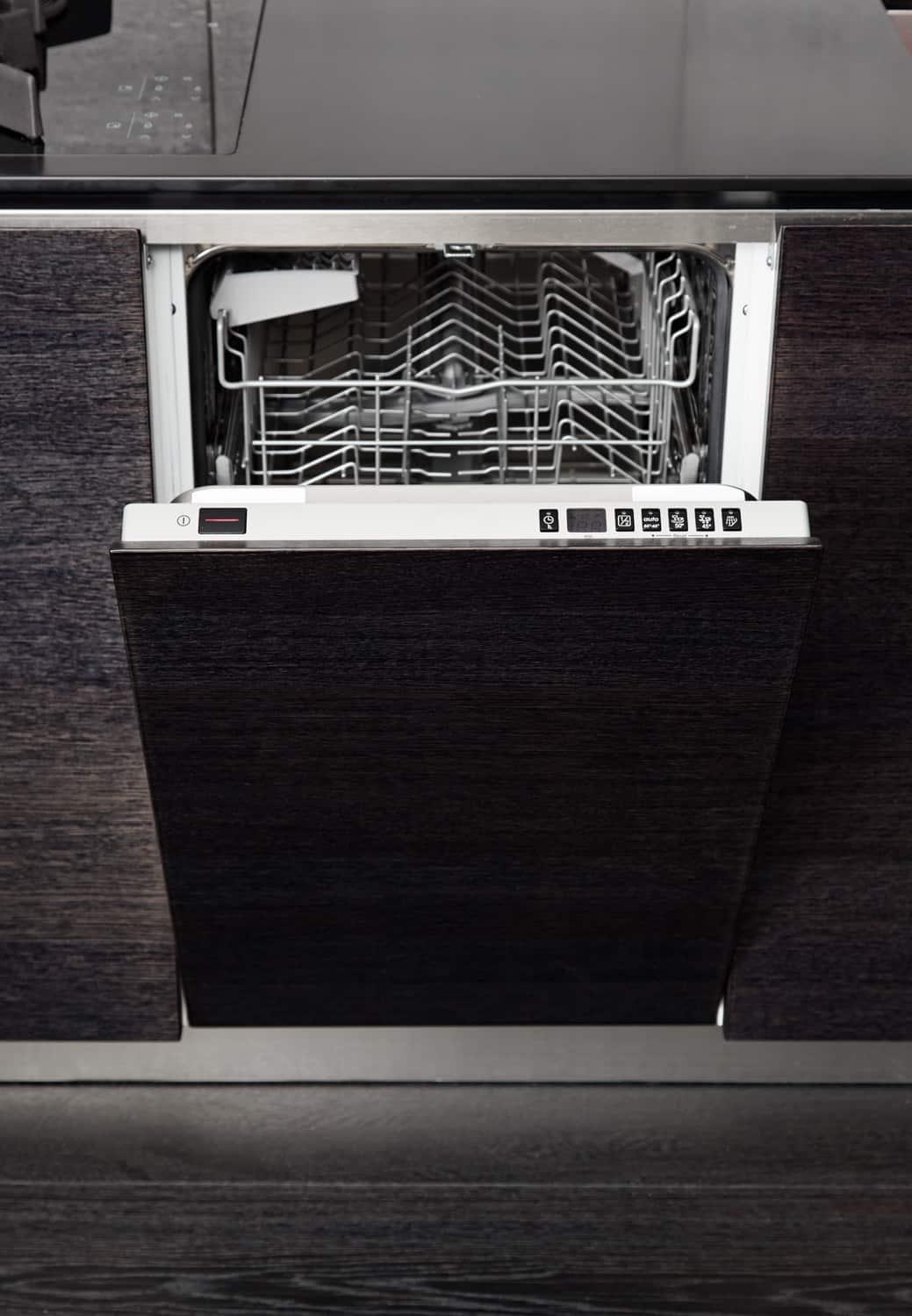
A dishwasher thermal fuse allows the control board to receive power. When a thermal fuse blows, the dishwasher won't start at all. If you suspect that your thermal fuse is blown, you can unplug it to test its continuity. To access the thermal fuse on your dishwasher, you will need to remove the front panel of the dishwasher and pull out the control panel. (Check your dishwasher's manual to see how to remove the control panel for your specific model.)
The thermal fuse for GE dishwashers are typically located at the top of the circuit board (again, check your owner's manual to verify the specific number/marking on the thermal fuse). Next, take a multimeter and place the needle on the fuse's contact. If you receive a reading of zero, then the fuse is fine. If not, then the fuse is the issue and will need to be replaced.
Do I need a plumber or electrician to fix a dishwasher?
Neither actually, it's best to call an appliance repair contractor. These particular contractors will not have a comprehensive understanding of a dishwasher's components. Dishwasher repair requires specialized knowledge of how dishwashers are built and how they operate.
Wrapping Things Up
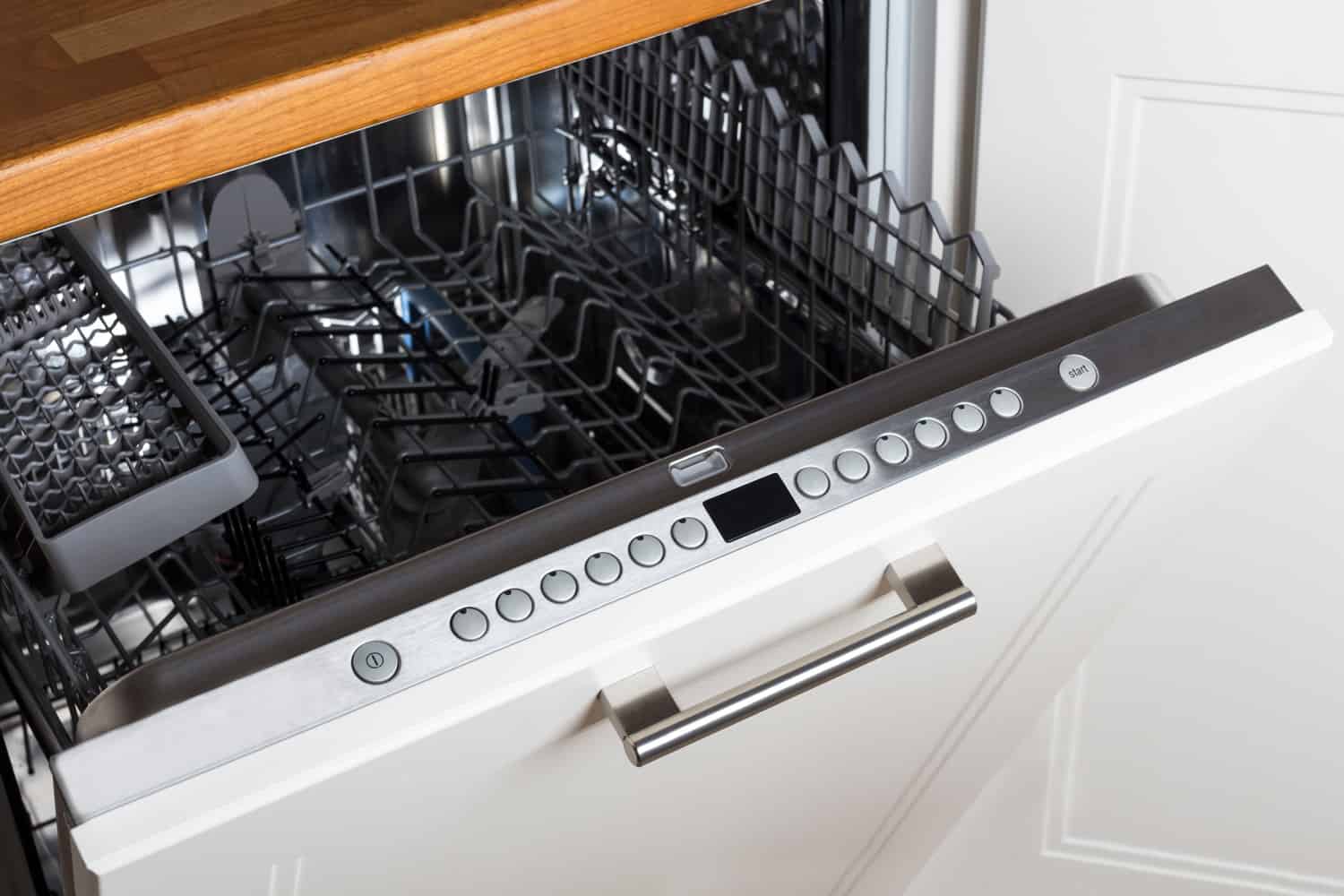
Hopefully, this post has given you a comprehensive understanding of the factors that may prevent a dishwasher from starting. If you can troubleshoot the potential issues yourself, it's always best to contact a licensed dishwasher repair technician.
Before you go, be sure to check out our other posts:
Can Nutribullet Go In The Dishwasher?
Can You Put A Pasta Maker In The Dishwasher?


